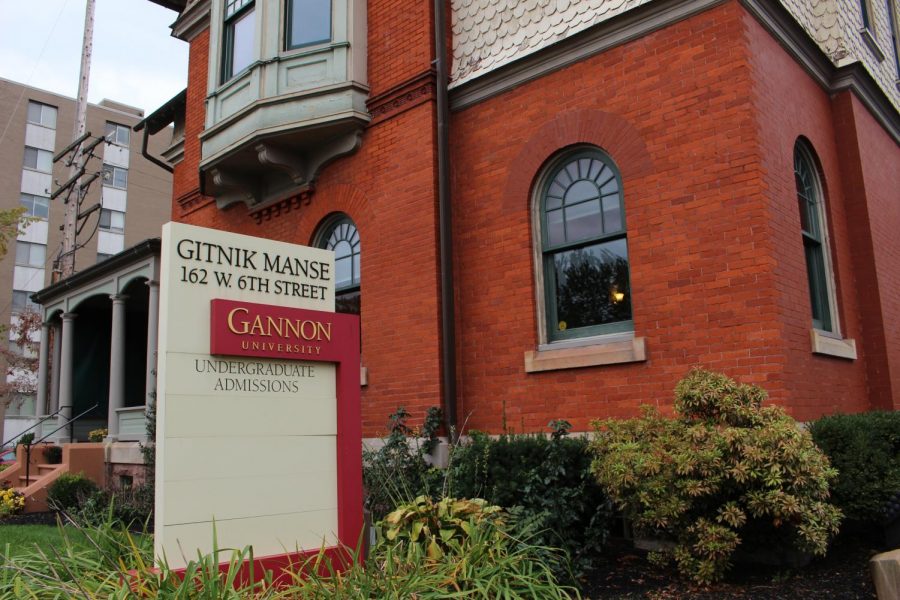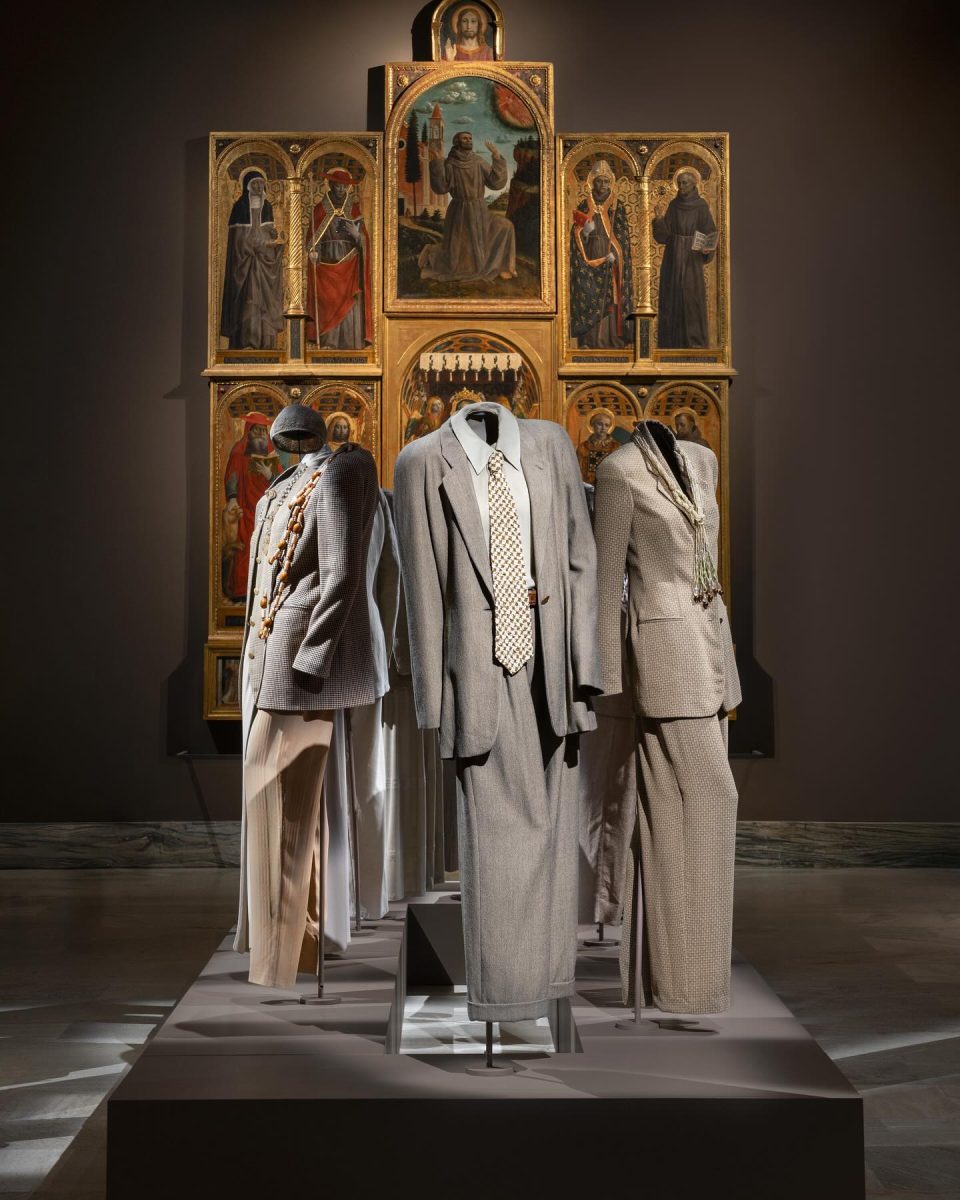Female college enrollment numbers rise
Higher education admissions increase for women despite COVID-19 pandemic
November 9, 2021
As a national trend, college enrollment is declining — just one of the many effects of the COVID-19 pandemic.
According to the Wall Street Journal, men have been hit particularly hard, accounting for 71% of this national decline. And even amid the pandemic, more women are going to college, especially in select fields.
At Gannon University, admissions as of the first day of classes for the fall 2021 semester were 56% women. This is only a slight decrease, as admissions were roughly 60% women for four years prior to that.
William Edmondson, vice president for enrollment management at Gannon, said that while Gannnon’s strength in the health professions is more popular with women, global students tend to be a greater proportion of men.
Although it might seem like it, this is not solely pandemic-driven. The issue is more complicated, and involves cultural, social and economic factors.
Historically, the presence of women in higher education was nonexistent. Most universities and institutions would not allow women into their programs. Women were considered inferior beings, from the time of the Greek philosophers, and it was considered frivolous to educate women.
Many women, such as Mary Astell and Mary Wollenscraft, fought for the right for women to be educated, Carolyn Baugh, director of the women’s studies program at Gannon, said.
“Many women forged this lonely path of being the only woman in a classroom, putting up with the pressure of having to be twice as prepared as any man in the room,” Baugh said.
This was not just at schools like Yale and Harvard — even Gannon, at one time, was a male institution. It wasn’t until the 1960s that both undergraduate and graduate programs began opening the door to women.
This was comparable to the trend nationally at that time, Jeff Bloodworth, a history professor and co-director of the School of Public Service and Global Affairs, said.
“Female enrollment in the 20th century in college was almost nonexistent,” Bloodworth said. “It wasn’t until the 1970s and 1980s that women became a major proportion of college populations.”
Even though women were permitted on college campuses by the mid-20th century, there was still unequal treatment between men and women. Women were often referred to as “coeds,” because they had muscled their way into coeducational campuses.
Women were often treated as prey and mere sexual objects by men on these campuses, rather than being treated as equal peers who were deserving of education.
“I think sheer force of numbers made recalibration of those attitudes inevitable, although we should still be speaking as openly as possible about sexual harassment of all kinds on campus,” Baugh said.
It was not until recently that protections for female professors have been put into place. It used to be that a woman would have to choose between family life and academia, because the two things could not coexist, Baugh said.
“Things like stopping the clock on the tenure process for women on maternity leave help, and it has become much more accepted to ask for a day off to care for a sick child or parent,” Baugh said. “Even so, the academic environment is still far more difficult for women than for men.”
The gender ratio in existence now changed because of the exponential growth of female enrollment, which has more than doubled over the last century. In the next few years, two women will receive a college degree for every man, according to the Wall Street Journal. This could impact the presence of more women in leadership positions, Bloodworth said.
“More women in leadership will change company cultures and surely enable access for more women in leadership roles,” Bloodworth said.
However, Bloodworth said this will not be an easy transition.
“This will be as slow and unsteady as all social progress is,” Bloodworth said. “One imagines that progress toward gender equality will continue, but this is by no means certain. Backlash and backsliding do occur.”
Baugh said that as a result of more women being engaged in higher education, there will be more woman friendly atmospheres, particularly for things like child care and mentoring of female students.
“Women don’t know what to ask for until they’ve really had to struggle because they’re going in the wrong direction and didn’t get guidance,” Baugh said. “Women who have emerged from those experiences tend to make better mentors.”
While fewer men going to college can be seen as men falling behind, this is far from the case when it comes to the labor market and the professional world, depending on the field.
“Men still inhabit the upper reaches of most professions and predominate in STEM,” Bloodworth said. “Women are slowly gaining parity — but men still inhabit the elite reaches of most every profession.”
However, the opposite is true in the classroom. Bloodworth said he has noticed a marked decline in male academic achievement in his classes over the last 10 years, which is part of a larger national trend.
“It’s not just about numbers — men aren’t achieving at the same level as women in the classroom,” Bloodworth said.
“They just work harder than men, on average. On average, the best students in the class are women, and on average the worst students in the class are men.”
One of the main concerns in higher education is the decline of high school graduates, Edmondson said.
“We have been dealing with this for many years, and it is taken into consideration when planning residence halls, other gender-based facilities and Division II sports,” Edmondson said. “The number of high school graduates has been declining for years, but the drop in 2025 is referred to as ‘the cliff.’”
However, at Gannon, this will not impact gender ratios in admission, as Gannon does not offer gender-based scholarships or differential admissions based on gender. But this is not the case everywhere. The New York Times reported that generally, admissions officials prefer to limit the disparity to 55% women and 45% men, because if a school becomes decidedly female, it is less attractive to men.
Bloodworth said that this is all part of a larger seismic shift in higher education.
“There will always be a few great male students, but women outnumber them in just about every class I teach,” Bloodworth said. “In terms of higher education, women are gaining the upper hand.”






